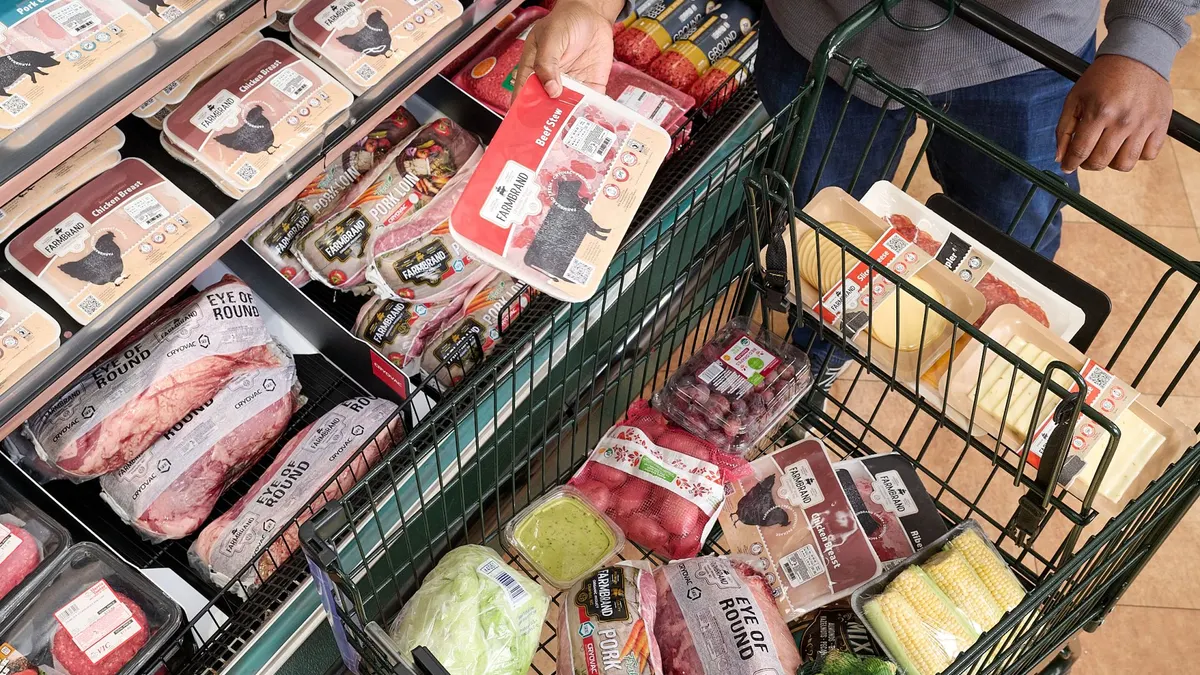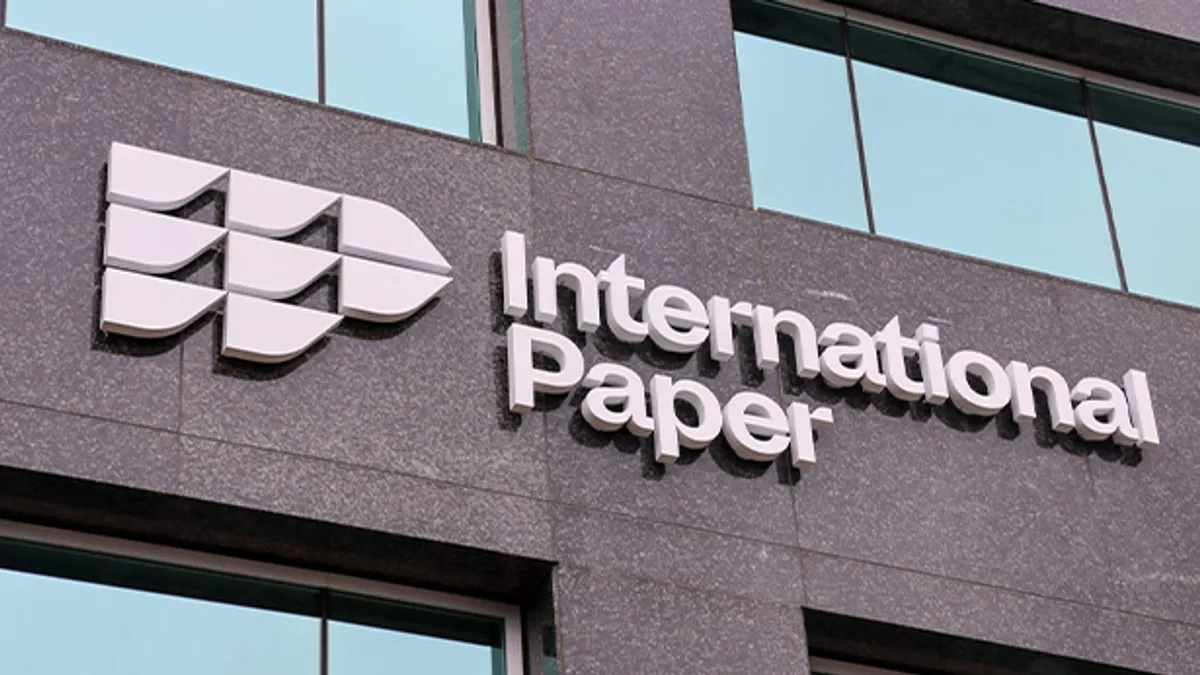Food and beverage trends that showed up or accelerated in recent months have eaten into some packaging companies’ earnings.
Packaging company executives called out certain economic and geopolitical factors, such as beef industry struggles and federal administration actions, during recent earnings calls, noting these are driving changes in consumer food purchasing habits — and ultimately packaging sales. But one concern that came up — the suspension of Supplemental Nutrition Assistance Program benefits — is poised to ease following legislation signed Wednesday to end the longest federal government shutdown in United States history.
Immigration enforcement and frozen benefits payouts were cause for concern as they relate to muted consumer turnout and spending, according to executives’ earnings call discussions. Meanwhile, consumers continue to be squeezed by costs and are opting for cheaper products.
Specifically, tight supply and higher input costs have sent beef prices soaring to record highs — up 51% this fall since February 2020, according to the Bureau of Labor Statistics — and consumers are curbing their beef purchases. The lower sales in Q3 struck packaging suppliers who service meat industry customers.
Trade downs abound
Consumer cost pressure is evident in lower grocery sales, said Graphic Packaging International CEO Mike Doss on the company's Nov. 4 earnings call. While GPI's sales volumes fell 2% year over year in Q3, that's still “outperforming most of the markets we serve,” he said.
“Increasingly, we hear from our CPG customers that the consumer market has bifurcated,” Doss said. “Upper-income consumers are still spending, but are spending differently and more carefully. Lower-income consumers continue to cut back as food prices rise further.”
For several earnings cycles, executives have pointed economic conditions driving trade downs, when consumers switch to a lower-cost option for the same product. This has fueled growth for private-label product sales while name brands take a hit.
Doss, in particular, has cited this change for a while as consumers continue to face cost pressures, such as inflation.
“In household products in the Americas, we see consumers reducing purchases and shifting to private-label alternatives,” he said this month. “Mass retail, superstores and discount grocers continue to take share from traditional grocers. That is one of the driving forces behind the surge in private-label offerings.”
Beef: It's not for dinner
Companies have observed a substantial uptick in consumers seeking protein-packed food and beverage options to support their health and wellness goals. Danone executives, for instance, explained on an Oct. 31 call the company’s difficulty with meeting surging consumer demand for high-protein yogurt. The protein push is in part tied to GLP-1 drugs and weight maintenance.
“Our paperboard punnets, along with other new innovations like our PaperSeal line, are a perfect fit with today's trends towards healthier eating and the growing use of GLP-1,” said GPI’s Doss, touching on plastic replacement in produce as well as in meat.
However, the beef sector has become a black sheep due to historic challenges from a confluence of factors — including a labor shortage, drought, parasitic infestations and tariffs — that are rippling to other parts of the supply chain.
“Everybody has read about beef. That's a big segment for us. And the cattle herds are down to a 70-year low. So there's a lot of struggles going on there,” said Packaging Corporation of America President Tom Hassfurther during the company's Oct. 23 earnings call.
The Q3 beef harvest rate dropped 10.5% year over year, and the “steeper-than-anticipated decline in beef production is pressuring our industrial exposed volumes,” said Sealed Air CEO Dustin Semach during a Nov. 4 earnings call. “We now expect this year's beef slaughter to be worse than 2024 by mid-single digits.”
This builds on Semach's comments following Q2 when he cited the company's resilience in the face of a volatile beef sector. He noted that fresh protein is a key end market for the company, particularly for its Cryovac brand of film solutions.
Protein is one of Amcor's six focus categories, which collectively account for half of its core portfolio. The company is touting growth in dairy, such as cheese, while meat falters.
“I think it's fair to say that we're having a bit of a tough time ... in the meat cycle right now,” said Amcor CEO Peter Konieczny on the company's Nov. 5 earnings call.
President Donald Trump took action on Nov. 7 to address beef industry challenges by directing the Department of Justice to launch an investigation into the largest meat packing companies that serve the U.S. — some of which are international — to determine if they're artificially inflating prices. DOJ has not announced a formal investigation so far. If the agency does investigate, a resolution is unlikely to be swift.
Fixing the beef problem is “going to take a little while. As I told you, the herds are down to 70-year lows, and these things take two to three years to rebuild — and we're only a year into the process,” Hassfurther said.
Semach predicted that cattle rebuilding will continue into 2026, be relatively flat in 2027 and potentially grow in 2028.
Government influence
Executives had their eyes on various Trump administration actions to monitor whether and how they might influence business.
For one, they watched the longest-ever federal government shutdown that just ended, which came with a suspension of Supplemental Nutrition Assistance Program benefits. Sealed Air had expected impacts to be “transitory,” Semach said.
“In the short term, the shutdown may continue to exacerbate the trade downs we are seeing as lower-income households would stretch their dollars even further,” he said.
Certain executives also addressed questions about how federal immigration enforcement actions could be influencing shifts in some consumers' purchasing habits.
“When you hear demand challenges, you'll hear them specifically from our customers, and they will be tied to probably an ethnic backdrop, ICE impacts,” said Ball CEO Dan Fisher during a Nov. 4 earnings call, his final one before leaving the company days later. Although this trend didn't hit Ball's metal can volumes in Q3, “it has to be impacting elements of the substrate and the ability for that end consumer to consume products via the same channels that they had historically.”
Constellation Brands appeared to experience a sharp dropoff in sales volumes during the spring “for the brands and the pack sizes that really over-index the Hispanic consumers across your portfolio,” RBC Capital Markets analyst Nik Modi raised to executives during the beverage company's Oct. 7 earnings call. He said that dip happened right when Immigration and Customs Enforcement activity started to ramp up this year, and he asked executives whether volumes would have grown in the absence of ICE activities, and whether they expected a return to growth once the ICE ramp-up subsides next year.
Constellation executives didn't directly answer, but they highlighted efforts to pay attention to consumers' demographics along with spending habit data. Constellation does a monthly consumer study “and the thing that has stood out for us is that 80% of surveyed Hispanic and non-Hispanic consumers continue to express concern about the socioeconomic environment we face,” said CEO William Newlands. “We've got a consumer base that's pulling in a bit, and they are not engaging.”
That said, he noted particular economic shakiness among Hispanic consumers, even though Newlands noted Constellation's Modelo beer brand is seeing increased loyalty from Hispanic consumers and remains the top-sold beer by dollars in the United States. The company continues to examine its price pack architecture to keep affordability in check for this demographic and others, Newlands said.
“One of the things that we track very carefully is ZIP code data. And the results that you are seeing in high-Hispanic ZIP code areas is significantly worse than what you see in the general market,” Newlands said. “Having the opportunity for the consumer who is financially constrained to find one of our iconic brands at a price point which they can afford at the current time is an important part of why price pack architecture is one of our key focuses now and will be going forward.”


















